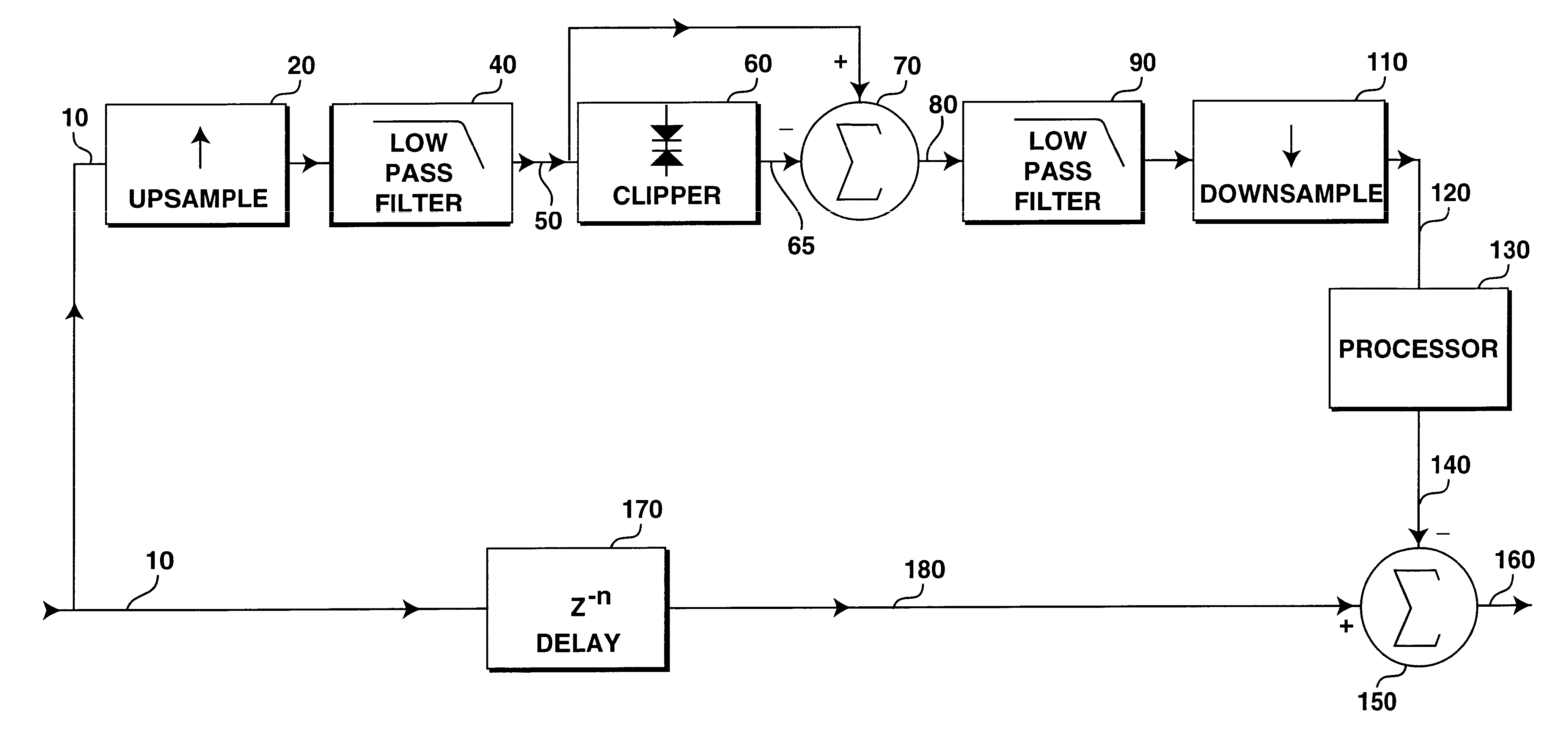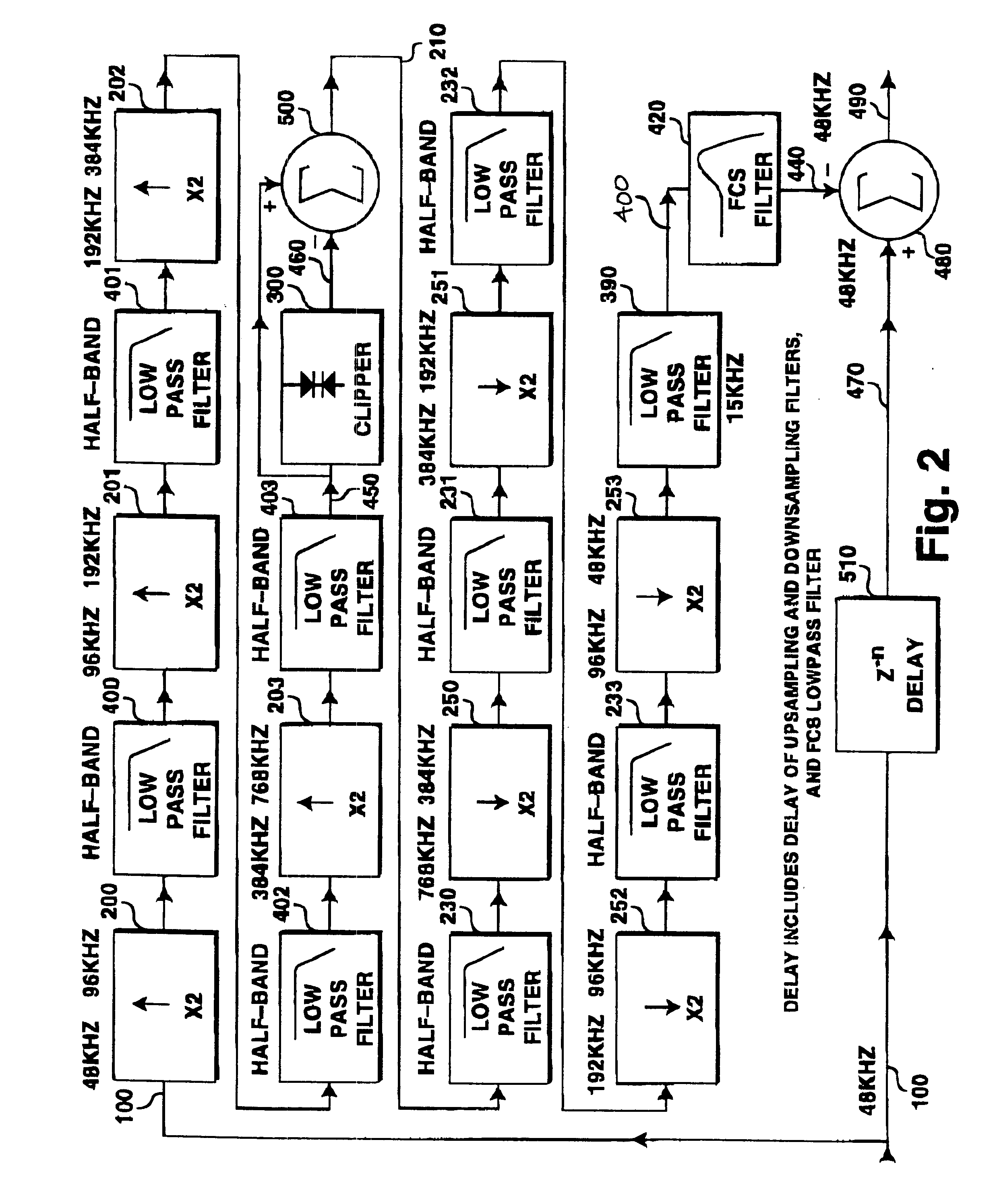Oversampled differential clipper
a differential clipper and oversampling technology, applied in the field of audio signal clipping, can solve the problems of attempting to digital-domain clipping, aliased harmonics can be very offensive to the ear, and it is highly unlikely that any one sample will occur
- Summary
- Abstract
- Description
- Claims
- Application Information
AI Technical Summary
Benefits of technology
Problems solved by technology
Method used
Image
Examples
embodiment
of FIG. 2
FIG. 2 shows a commercial, detailed implementation of the present invention. For illustrative purposes, the original sample frequency of 48 kHz is used, although the invention can of course be practiced at other sample frequencies.
The signal to be processed is applied to line 100. It is upsampled 2.times. by upsampler 200, which inserts a zero between every sample. The image caused by this process is removed by filter 400. This is a half-band, polyphase symmetrical finite impulse response (FIR) filter (as is well-known in the art) to minimize the number of operations necessary to realize the filter while retaining phase linearity. This process is repeated three more times (by upsampler / filter pairs 201 / 401, 202 / 402, and 203 / 403) to create a signal upsampled to 768 kHz sample frequency which is coupled to the clipper 300 and differencing circuit 500 on line 450.
Clipper 300 operates at a 768 kHz-sample frequency. If the sample value on line 450 is greater than the preset posi...
PUM
 Login to View More
Login to View More Abstract
Description
Claims
Application Information
 Login to View More
Login to View More - R&D
- Intellectual Property
- Life Sciences
- Materials
- Tech Scout
- Unparalleled Data Quality
- Higher Quality Content
- 60% Fewer Hallucinations
Browse by: Latest US Patents, China's latest patents, Technical Efficacy Thesaurus, Application Domain, Technology Topic, Popular Technical Reports.
© 2025 PatSnap. All rights reserved.Legal|Privacy policy|Modern Slavery Act Transparency Statement|Sitemap|About US| Contact US: help@patsnap.com



